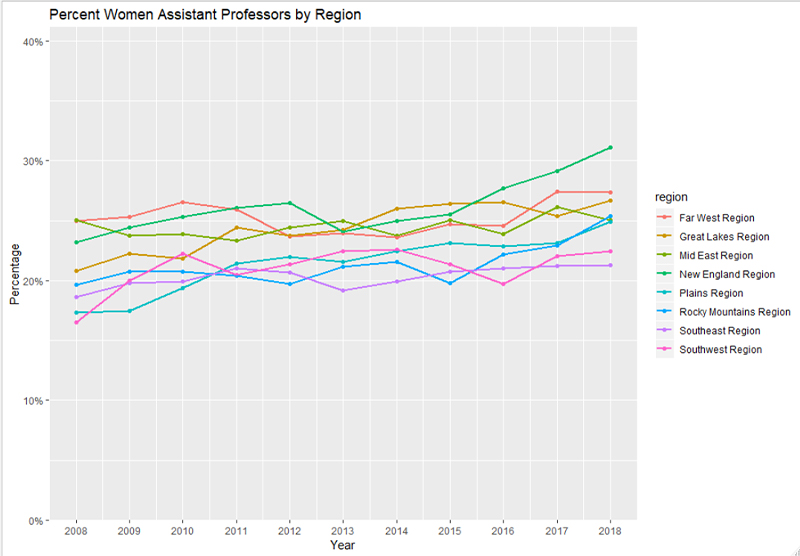GENDER DIVERSITY OF ASSISTANT PROFESSORS, BY REGION
By Angela Erdiaw-Kwasie
Reprinted from ASEE Connections
Faculty gender diversity is viewed as offering students a richer instructional experience. It also provides female students with role models in academia.
Over the period 2008–2018, the population of tenured and tenure-track engineering faculty members became slightly more diverse, with the proportion of women increasing from 12 percent to 17 percent. From 2008 to 2016, the total number of assistant professors was smaller each year than the total number of associate professors and full professors. In 2017 and 2018, the total number of assistant professors was larger than the total number of associate professors, indicating an increase in hiring of new faculty in engineering. The proportion of women tends to be higher among assistant professors than among associate and full professors. The percentage of women has risen over the 11-year period from 20.7 percent to 24.9 percent for assistant professors, 14.1 percent to 20.3 percent for associate professors, and 7.3 percent to 12.2 percent for full professors.
The table below shows the extent of gender diversity among assistant professors of engineering in each of the eight U.S. geographical regions as defined by the Bureau of Economic Analysis.
The percentage of female assistant professors rose between 2008 and 2018 in all regions except the Mid East region, where it remained the same—25 percent—as in 2008. The Mid East region comprises Delaware, the District of Columbia, Maryland, New Jersey, New York, and Pennsylvania. In New England (Connecticut, Rhode Island, Massachusetts, New Hampshire, Maine, and Vermont), the proportion of women assistant professors grew steadily in the three years 2016 to 2018, from 25.5 percent to 31.2 percent. Other regions experienced a rise and fall within this period.
Table 1: Percentage of Female Assistant Professors in U.S. Geographical Regions


